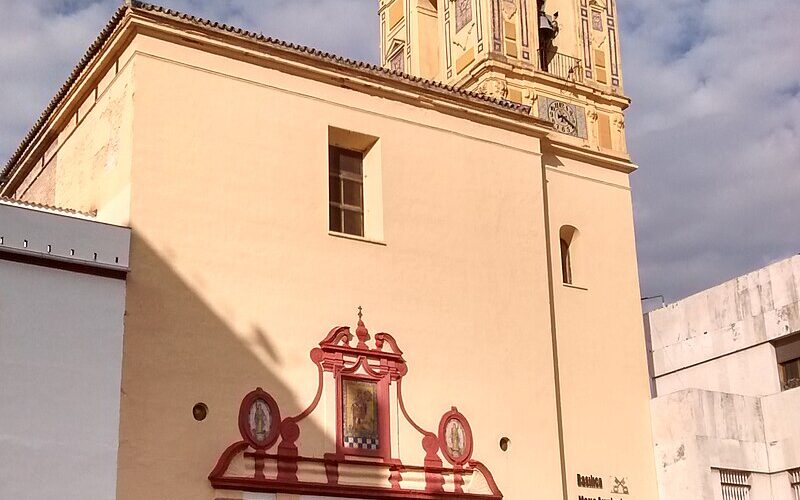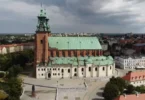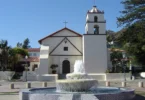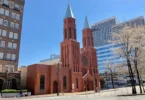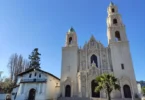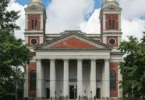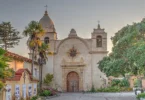Introduction
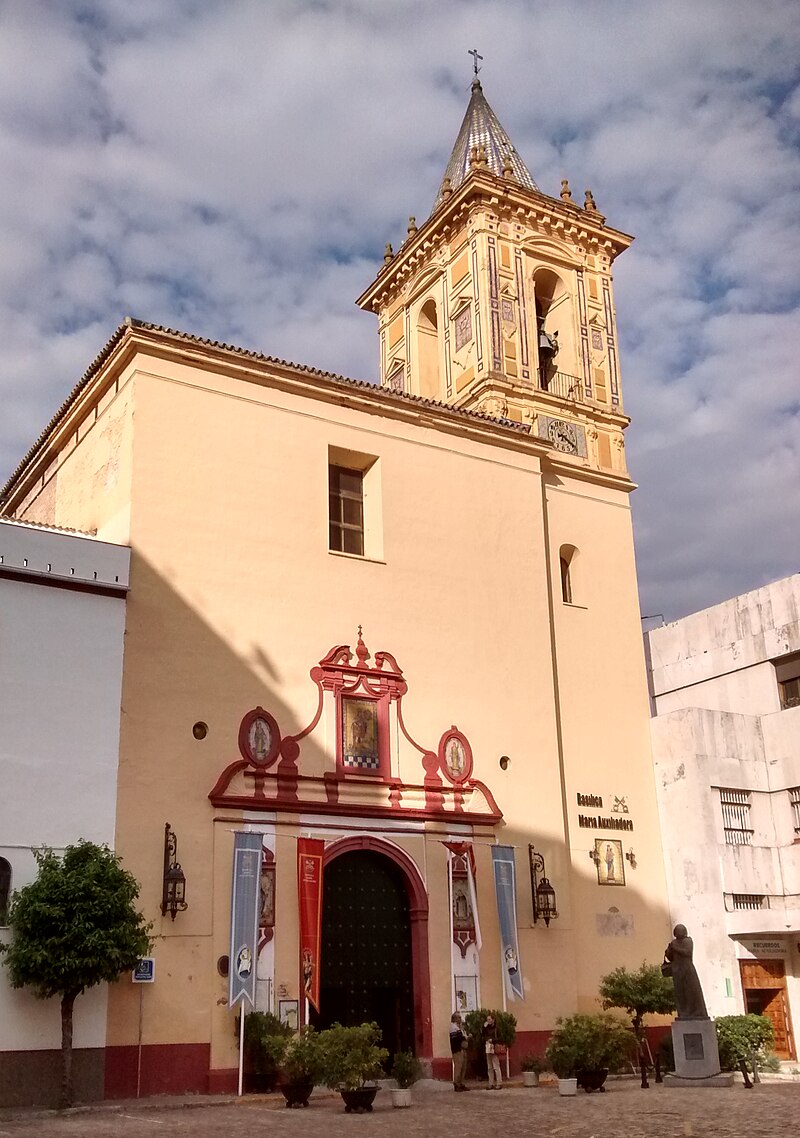
The Basilica of Mary Help of Christians, located in Seville, in the autonomous community of Andalusia, Spain, is a historic and religious landmark that traces its origins back to the 17th century. This sacred site is under the care of the Salesian Order, reflecting their longstanding devotion to education and the veneration of the Virgin Mary. Over the centuries, the basilica has become a central hub of religious activity in the region. It serves as the headquarters for both the Archconfraternity of Mary Help of Christians and the Brotherhood of the Trinity, two important religious associations that play a vital role in the spiritual life and traditions of Seville.
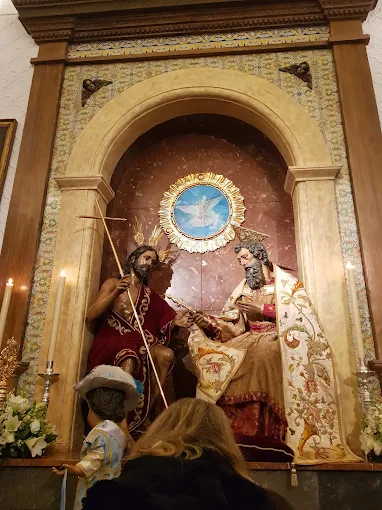
Historical Origins and Early Christian Significance
The origins of the Basilica of Mary Help of Christians trace back to one of the oldest monastic foundations in Seville. Following the Christian Reconquest of Seville in 1248, led by King Ferdinand III the Saint, the Order of the Most Holy Trinity (Trinitarians) established the Convent of the Trinity on this site. The Trinitarians, a mendicant order founded in the 12th century, were known for their dedication to ransoming Christian captives. Beneath the current church lie subterranean galleries, which hold special spiritual significance in local tradition. It is believed that Saints Justa and Rufina, revered as the patron saints of Seville, were imprisoned in these underground chambers during the Roman persecutions. This deeply rooted tradition elevated the sanctity of the site and helped sustain its religious role over the centuries.
17th-Century Decline and Grand Reconstruction
By the early 17th century, the original church and convent complex had deteriorated significantly. By 1617, the structure was described as being in a state of ruin. A major reconstruction was launched in 1621, initiated by the Trinitarian Order and supported by the local ecclesiastical authorities. The architectural project was entrusted to Friar Miguel de Peñalosa and Miguel de Zumárraga, who at the time was also serving as the chief architect of Seville Cathedral. These prominent figures contributed to a refined baroque design, blending classical influences with the grandeur of early Spanish Baroque. Construction was executed by the architect Juan de Segarra, in collaboration with Andrés de Oviedo, master builder for the city of Seville. The construction proceeded in stages, and by 1640, Cristóbal Martínez had taken over as master builder to oversee the later phases of the project, ensuring continuity in vision and craftsmanship. This prolonged construction effort produced a richly adorned church that reflected the religious and artistic aspirations of the era.
18th-Century Renovation and 19th-Century Disentailment
The church underwent significant renovations during the 18th century, possibly involving enhancements to the altarpieces, chapels, and façade in accordance with evolving liturgical tastes. Despite maintaining its religious functions, the convent faced dissolution during the ecclesiastical disentailment (Desamortización) of 1835, part of liberal reforms that sought to reduce the influence of the Church in Spanish political and economic life. Although the monastic community was disbanded, the church itself remained open and active, continuing to serve the local faithful. This transitional period marked a decline in institutional support but allowed the church to persist as a parish site.
Salesian Era and Marian Devotion (1882 Onward)
In 1882, Cardinal Joaquín Lluch y Garriga, Archbishop of Seville, made a pivotal decision to entrust the abandoned convent and church to the Salesian Congregation. The Salesians of Don Bosco, known for their dedication to education and youth ministry, established their presence and immediately promoted devotion to Mary Help of Christians — a central figure in Salesian spirituality. Under their care, the church became a vibrant center for popular Marian devotion, catechesis, and youth outreach. This marked the transformation of the historic Trinitarian site into a Salesian stronghold in southern Spain.
Connections with Spanish Saints and Devotional Figures
The basilica is intimately connected with several prominent Spanish saints. Francisco Guerrero, a pious layman who worked as a cook in the Convent of the Trinity, was the father of Saint Angela of the Cross, the beloved founder of the Sisters of the Company of the Cross. Francisco was a man of deep religious conviction and a lover of sacred literature. His daughter Joaquina, who accompanied Saint Angela in many charitable missions, later transferred his remains to a chapel inside the church, emphasizing the family’s enduring link to the sacred site. Additionally, the church served as the setting for the first Mass of Saint Manuel González García, who would later become Bishop of Málaga and Palencia, and was canonized in 2016. He celebrated his first Mass here on September 29, 1901, marking another milestone in the church’s long spiritual history.
Mid-20th Century Liturgical and Structural Changes
The mid-20th century brought a series of architectural modifications aligned with changing liturgical practices. In 1943, the walls that separated the side aisles from the central nave were removed, opening up the interior space for better visibility and congregation flow. Likewise, the iron railings (rejas) enclosing the chapels were taken down to foster greater participation in worship, though the railing of the Chapel of the Brotherhood of the Trinity, located at the foot of the church in the Gospel nave, was preserved due to its historical significance.
Sanctuary and Basilica Status
In recognition of its profound religious significance and the vitality of its pastoral mission, the church was elevated to the rank of Diocesan Sanctuary in 1980 by Cardinal José María Bueno Monreal. This designation reflected its increasing role as a center of pilgrimage and spiritual life, particularly due to its association with numerous saints and religious communities, including the Salesians. Further ecclesiastical distinction came on May 29, 2008, when Pope Benedict XVI officially declared it a Minor Basilica, in honor of its deep-rooted Marian devotion and spiritual legacy. This historic elevation marked several milestones: it became the first basilica in Spain dedicated specifically to Mary Help of Christians, the third church in Seville to receive this honor (after the Basilica of La Macarena and the Basilica of Jesús del Gran Poder), and one of only four minor basilicas in the city. This recognition affirmed its status as a vital beacon of Salesian spirituality and Marian devotion in Andalusia.
Architecture of Basilica Shrine of Our Lady Help of Christians, Seville, Spain
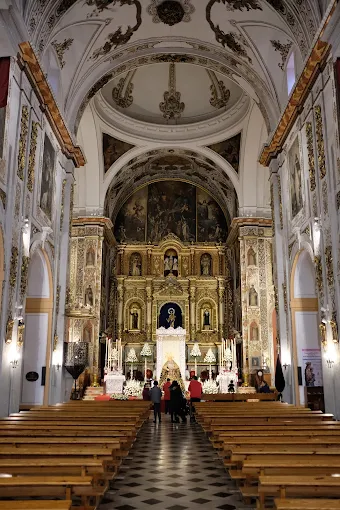
The Titular Image: Mary Help of Christians
At the spiritual center of the Basilica is the revered image of Mary Help of Christians, the titular figure to whom the entire temple is dedicated. This sculpture holds profound importance in the Salesian tradition, symbolizing the order’s deep devotion to the Virgin Mary. The statue arrived at the Salesian House of the Holy Trinity in Seville on May 6, 1895, having been commissioned from the prestigious Sarriá workshop in Barcelona. Though unsigned, the sculpture is attributed to the Catalan sculptor Parellada, known for his skill in religious art. The polychromy was done by Casanovas, a craftsman noted for his ability to bring wooden figures to life through paint and gilding.

Artistic Features and Symbolism
The statue itself is both majestic and maternal. It stands at 1.91 meters in height with its pedestal, and 1.55 meters without. Mary is depicted with flowing hair cascading down her back, exuding a calm, motherly presence. In her right hand, she holds a scepter, symbolizing her queenship and divine authority. In her left arm, she supports the Child Jesus, who is shown with his arms extended, offering an open gesture of blessing to the faithful. This iconography emphasizes Mary not only as the Mother of God but also as a powerful intercessor and protector. The statue is often referred to by the faithful as “La Virgen de los Ojos Bajos” The Virgin with Downcast Eyes a title inspired by her gentle, humble gaze. Over time, this image has become the most widely reproduced Marian statue in the Salesian world, appearing in calendars, prayer cards, books, and school chapels globally.
Blessing and Historical Ceremony
The statue’s blessing was a momentous occasion, held on May 30, 1895, shortly after its arrival. The ceremony was presided over by Cardinal Benito Sanz y Forés, then Archbishop of Seville, and was attended by many dignitaries and members of the religious community. The godmother of the blessing was the Infanta María Luisa Fernanda de Borbón, a prominent figure in the Spanish royal family and daughter of King Ferdinand VII. Following the blessing, Friar Diego de Valencina, guardian of the Capuchin Fathers in Seville, symbolically stood in for the godmother during the liturgical rites. This event marked the statue’s formal introduction into the religious life of Seville and its veneration by generations of Salesians and faithful devotees.
Canonical Coronation and Later Honors
The image’s importance continued to grow over the decades, culminating in its canonical coronation on May 13, 1954, during a grand ceremony held at the Plaza Calvo Sotelo—today known as Puerta de Jerez. The coronation was led by Cardinal Pedro Segura, then Archbishop of Seville, and was attended by thousands of faithful. The coronation, authorized by the Vatican, symbolized the Church’s recognition of centuries of devotion and miracles attributed to Mary under this title. In 1981, the statue was formally named Patroness of the Temple when the basilica was elevated to the status of Sanctuary by Cardinal José María Bueno Monreal, further solidifying its spiritual significance. Today, the statue is enshrined at the center of the main altar, placed on an ornate pedestal carved by Manuel Guzmán Bejarano, a renowned Sevillian artisan.
Sacred Artworks within the Basilica
Apart from the image of Mary Help of Christians, the basilica is home to an exceptional collection of sculptures and reliefs, many of which date back several centuries. These works not only enhance the church’s beauty but also serve as valuable pieces of Seville’s religious and artistic heritage.
Child Jesus (Mid-17th Century)
One of the oldest sculptures in the basilica is a figure of the Child Jesus, dating from the mid-17th century. This piece is notable for its tender expression and baroque stylization, which reflects the emotional warmth and devotional intimacy typical of the era. The child’s gentle demeanor and detailed garments invite the faithful to approach in prayer and affection.
Relief: Adoration of the Shepherds (1601–1602)
A magnificent relief of the Adoration of the Shepherds, created between 1601 and 1602 by the sculptor Diego López Bueno, adorns one of the chapel walls. López Bueno, an important figure of Sevillian Mannerism, infused this work with vivid emotion and intricate detail. The shepherds are portrayed with awe and humility as they present gifts to the newborn Christ, surrounded by realistic animals and architectural elements that create depth and texture.
Christ Tied to the Column (1565)
Another significant artwork is the sculpture of Christ Tied to the Column, made in 1565 by Juan Giralte, a notable Renaissance sculptor. This piece captures the moment of Christ’s flagellation, his body rendered with anatomical precision and emotional gravity. The sorrow in Christ’s expression and the tension in his pose convey the intensity of his Passion, inviting contemplation on the suffering he endured.
Pietà (Mid-16th Century)
A poignant Pietà, dating from the mid-16th century, also resides within the basilica. This sculpture, likely created by an anonymous master of the Sevillian Renaissance, depicts the Virgin Mary cradling the lifeless body of Christ. The raw emotion and delicate carving make it a powerful focus for prayer and meditation, particularly during Holy Week.
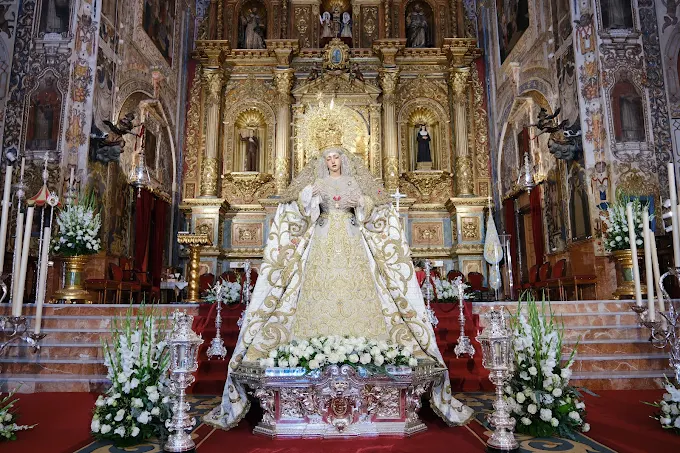
Main Altarpiece and Theological Paintings
The main altarpiece of the basilica, crafted by José Alarcón around 1930, stands as both the architectural and symbolic centerpiece of the sacred space. Designed with classical proportions and adorned with elegant gilded details, it frames the revered image of Mary Help of Christians with a sense of grandeur and solemn reverence. Above the central niche, three significant oil paintings completed by Joaquín Cabral Bejarano in 1814 enrich the altarpiece’s theological and artistic narrative. These paintings depict Saint Felix of Valois, co-founder of the Trinitarian Order, shown in a contemplative pose; Saint John of Mata, another founder of the order, portrayed holding a chain symbolizing Christian liberation; and the Holy Trinity, rendered in the traditional form of the Father, Son, and Holy Spirit united in divine harmony. Together, the altarpiece and its paintings elevate the basilica’s liturgical and aesthetic atmosphere, intertwining a profound tapestry of faith, history, and artistic devotion.
Feast Day
Feast Day : 24 May
The feast day of the Basilica of Mary Help of Christians in Seville, Spain, is celebrated on May 24. This aligns with the universal Catholic feast of Mary Help of Christians, established by Pope Pius VII in 1815. It is a major celebration for the Salesian community, marked by Masses, processions, and devotions throughout the month of May.
Church Mass Timing
Yet to Update
Church Opening Time:
Monday to Saturday : 8:30 am – 11:00 am, 7:30 pm – 9:00 pm
Sunday : 9:30 am – 2:00 pm, 7:30 pm – 9:00 pm
Contact Info
Address : Basilica Shrine of Our Lady Help of Christians
41008 18, C. María Auxiliadora, 41008 Sevilla, Spain.
Phone : +34 600 99 24 23
Accommodations
Connectivities
Airway
Basilica Shrine of Our Lady Help of Christians, Seville, Spain, to Seville Airport (SVQ), distance 18 min (8.2 km) via Av. de Kansas City and A-4.
Railway
Basilica Shrine of Our Lady Help of Christians, Seville, Spain, to Seville-Santa Justa Station, distance 6 min (1.5 km) via C. María Auxiliadora and Av. José Laguillo.

